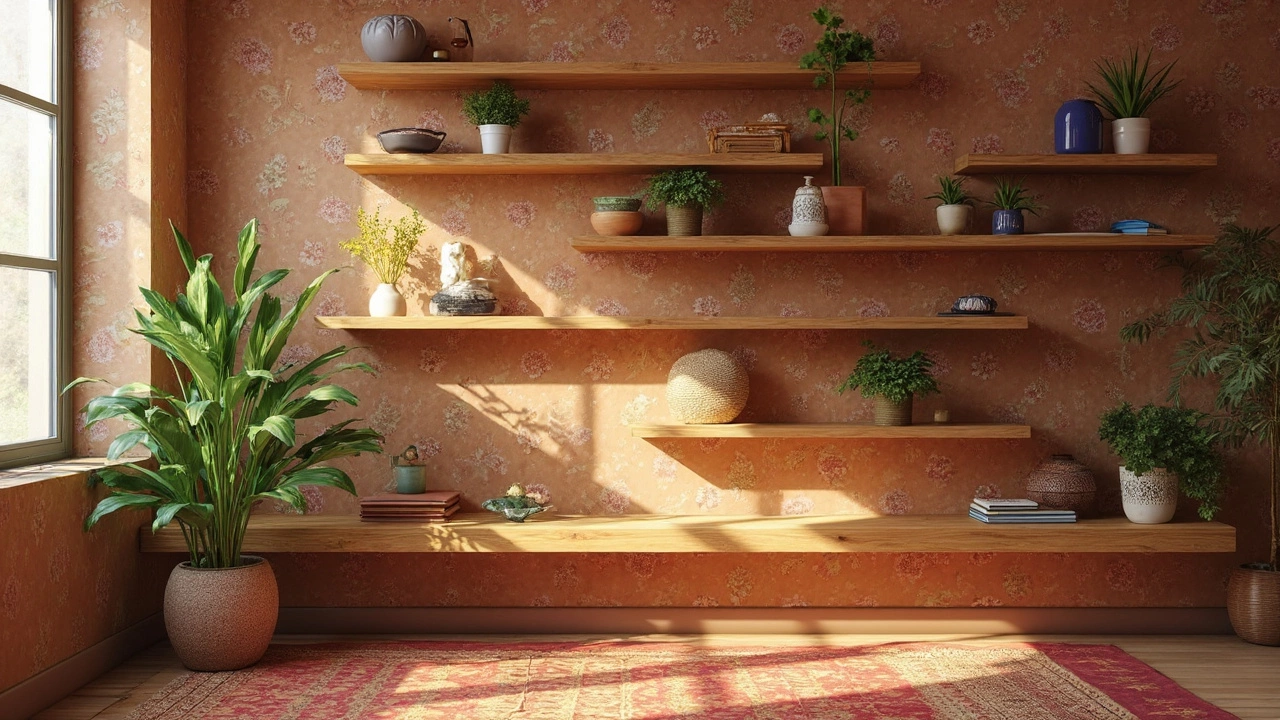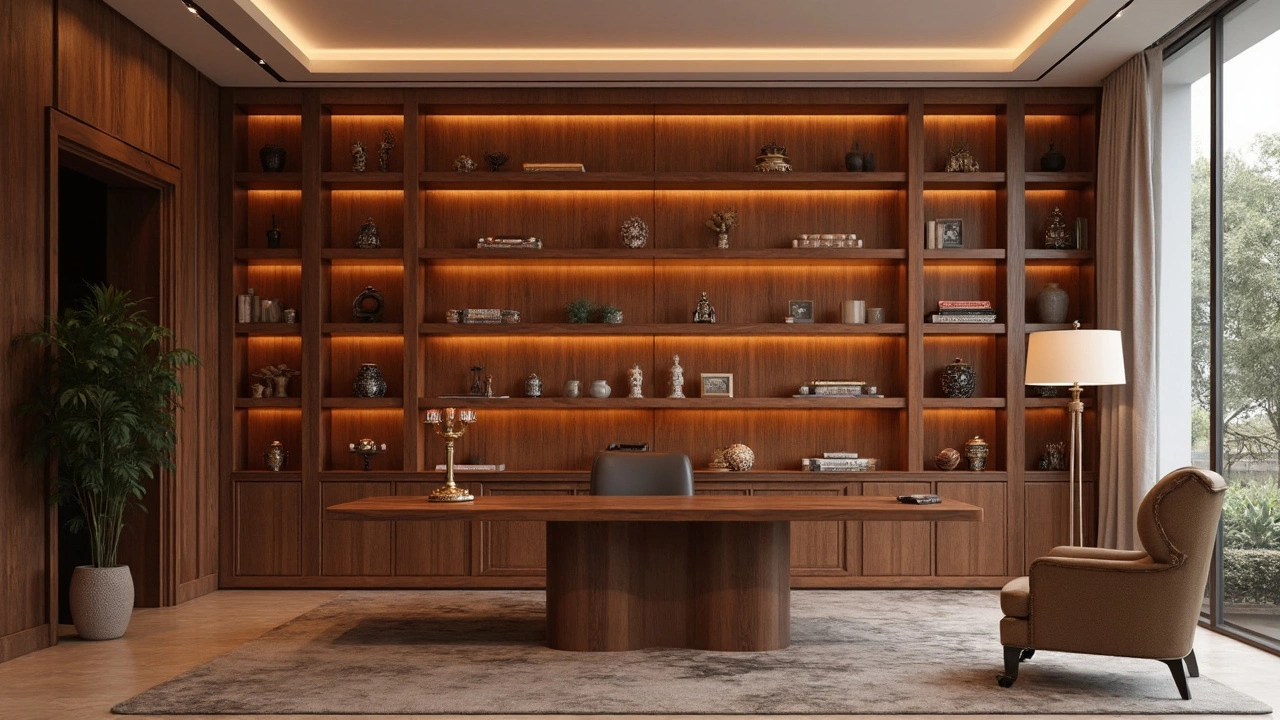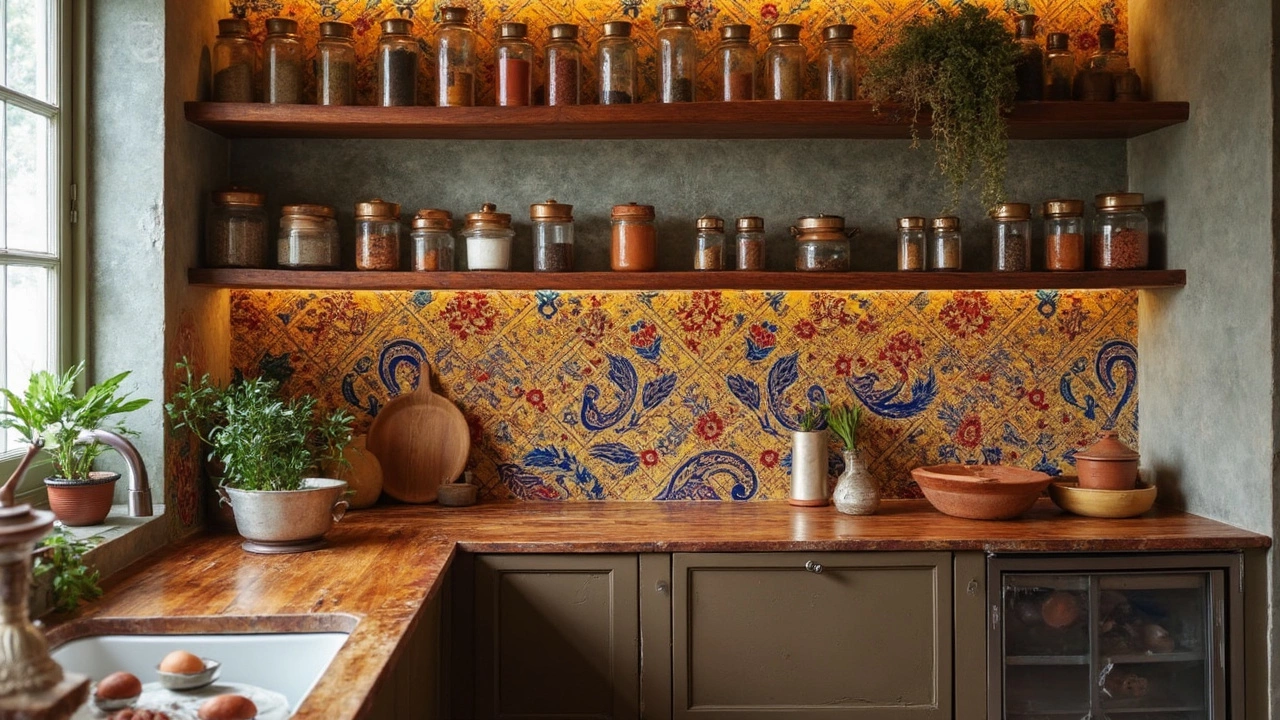Are Floating Shelves Cheaper than Cabinets? A Practical Look

Ever wondered if floating shelves might be a cheaper option than cabinets for your space? You're not alone. Lots of folks are doing the same math, trying to figure out how to stretch that home improvement budget just a bit further. But here's the thing – while floating shelves often come with a lower price tag, it's not always a straightforward decision. There are lots of factors to consider, including installation, materials, and how you plan to use the space.
Let's break it down. In many cases, floating shelves can be an affordable alternative to cabinets, especially if you're handy with a drill and level. You might save some bucks by installing them yourself. Plus, they often use less material, cutting costs further. But, are they as sturdy? Do they fit all the stuff you want to store? These are the questions we’ll explore, giving you the info you need to make a smart choice for your home or office.
- Understanding Costs: Shelves vs. Cabinets
- Installation: What's Involved?
- Material Matters: Durability and Style
- Purpose and Functionality
- Tips for Choosing the Right Option
Understanding Costs: Shelves vs. Cabinets
When it comes to saving bucks, figuring out whether floating shelves are cheaper than cabinets can be tricky. Let's dive into the expenses you might face with each option and find out what's really going on.
Initial Purchase Price
First up, let's talk base prices. Generally, floating shelves tend to be more affordable right off the bat. Why? They're simpler in design and use less material. You can find sturdy options for as low as $20 a shelf, while a cabinet might set you back a couple hundred dollars, depending on the material and craftsmanship.
Installation Costs
Here’s where things start to shift. If you're a DIY enthusiast, floating shelves might still keep costs low. They're often easier to install with less hardware and less know-how needed. Cabinets, on the other hand, may require someone with a bit more expertise—cue the potential labor costs.
| Installation Type | Average Cost |
|---|---|
| Floating Shelves (DIY) | $0 - $50 |
| Floating Shelves (Professional) | $50 - $150 |
| Cabinets (DIY) | $50 - $200 |
| Cabinets (Professional) | $200 - $600 |
Materials and Longevity
Think long-term. If you’re planning to load up your shelves with heavy stuff—like your impressive collection of books or those oversized kitchen gadgets—cabinets might be the tougher choice. Solid wood is pricier but lasts longer, while cheaper materials might save money upfront but wear out sooner. Floating shelves, particularly those made from wood or metal, can handle a decent amount of weight, but be careful not to overload them.
Maintenance Over Time
Don’t forget about upkeep. Floating shelves usually have exposed surfaces that might need a more frequent dusting, whereas some cabinets can hide a mess inside without an urgent need for cleanup. Their durability, again, can impact costs if you need repairs down the line.
So, are floating shelves cheaper than cabinets? It depends on what you need, what you’re storing, and whether you're willing to put in a bit of elbow grease. Take all these factors into account for a decision that fits your budget and style.
Installation: What's Involved?
So, you're considering how hard it might be to install floating shelves versus cabinets? It's a good question, and it could influence your choice quite a bit. Generally, hanging floating shelves is simpler and quicker, especially if you're the DIY type. Here's what you need to know to compare.
Floating Shelves: A DIY Dream?
Floating shelves are often praised for their easy installation process. Usually, you just need a drill, a level, some screws, and brackets. They're lightweight, so there are fewer worries about hitting studs or having multiple hands to hold them up. Here’s a basic rundown of how you’d go about it:
- Mark where you want the shelves.
- Use a level to ensure those marks are aligned.
- Attach the brackets to the wall with screws.
- Slide the shelf onto the brackets and secure it.
With just a bit of patience and measuring twice, you can have your shelves up in a couple of hours. Handy tip: check the weight capacity. Overloading can lead to sagging or, worse, crashing down.
Cabinet Challenges
Now, cabinets are a different story. They usually require more hardware and often need to be anchored securely to prevent tipping, especially if they're tall or heavy:
- Locate and mark the studs in your wall; these are key for support.
- Using a level, ensure the cabinet lines with the stud marks.
- Secure the cabinet into the studs using screws and brackets.
- Double-check for stability before loading with items.
This process can require more tools and a helping hand due to the weight and size of the cabinets. If DIY isn’t your style, hiring a pro might be worth the investment, although it adds to the total cost.
Consider electricity or plumbing lines hidden behind walls too in both cases. It's always a good idea to check before drilling to avoid costly mistakes. So, when you're crunching numbers, factor in not just material cost but also installation effort and potential extra help.

Material Matters: Durability and Style
When it comes to choosing between floating shelves and cabinets, the materials used can make a huge difference in both durability and style. Let’s break it down, so you know exactly what you're getting into.
Durability: Sturdy or Flimsy?
First off, durability varies a lot between different materials. Floating shelves are often made of wood, MDF, or metal. Wood is a classic choice, offering a nice mix of strength and style. But remember, good quality wood can be just as costly as a budget cabinet.
MDF, or medium-density fiberboard, is lighter on the wallet but might not hold up well under heavy loads. If you opt for MDF, consider what you're planning to place on those shelves. A few books? You're good! A hefty collection of ceramics? Maybe not.
Metal shelves are a durable pick and can hold serious weight, but they lack the warm touch of wood. Plus, they might not suit every decor style.
Style: Modern or Classic?
On style, floating shelves really shine in one area: versatility. They come in various finishes and designs, easily fitting in with any theme, from sleek minimalism to rustic charm. You want shelves that blend in or stand out? That choice is yours!
Cabinets, meanwhile, usually offer a more traditional vibe. They’re a bit more rigid in terms of styles, though they can be painted or stained to match your decor. If you’re after hidden storage with a more timeless look, cabinets still might be your go-to.
Let’s Talk Practicality
Here's a quick look at some material options:
| Material | Pros | Cons |
|---|---|---|
| Wood | Durable, stylish | Can be pricey |
| MDF | Inexpensive, easy to paint | Less durable |
| Metal | Strong, modern look | Cold appearance |
By considering what you need in terms of durability and style, you can pick the right shelving solution for your home. It's all about balancing the practical with the aesthetic, so get clear on your priorities before making a decision!
Purpose and Functionality
When weighing up floating shelves against cabinets, understanding their purpose and functionality is key. Each has its own strengths and knowing these can help you decide what's best for your space.
Open Display vs. Hidden Storage
Floating shelves typically serve well as open display areas — think about showing off your favorite books or decorative items. They're great if you like a visual appeal and easy access. However, they mean less privacy because everything is out in the open. Cabinets, on the other hand, offer hidden storage, keeping things tidy and organized behind closed doors. That's ideal for items you don't want in plain view or need to protect from dust.
Space and Layout Considerations
One big plus point of floating shelves is their adaptability to small spaces. They are sleek and minimal, making them perfect for tight areas or where you want to maintain an open feel. Cabinets often take up more room due to their depth but provide additional storage. Deciding whether you prioritize saving space or maximizing storage is crucial.
Weight and Durability
Functionality also involves understanding what you're planning to store. Cabinets generally offer more sturdiness, suited for heavier items like cookware or appliances. With floating shelves, you'll need to consider their weight limits and ensure they’re securely anchored. Overloading them could lead to unfortunate accidents.
Each has its place, and thinking about how you use your space daily will guide you toward the right choice.
| Item | Maximum Weight (lbs) |
|---|---|
| Floating Shelf (Standard) | 20-30 |
| Standard Wall Cabinet | 70-100 |
Before deciding, evaluate what you actually need from your shelves or cabinets, so they serve your space effectively and stylishly!

Tips for Choosing the Right Option
Not sure whether to go with floating shelves or cabinets? Here's a straightforward guide to help you make that choice. Consider your space, style, and storage needs.
Think About Your Budget
Start by looking at your budget. If you're aiming to keep costs down, floating shelves might seem like the best bet. They generally require fewer materials and can be a DIY project. However, remember to factor in the cost of potential repairs or reinforcement if you're not sure about their load capacity.
Analyze Your Storage Needs
Are you planning to store heavy books or just a few plants and decorative items? Cabinets tend to hold a lot more weight and are better for stashing away what you don’t want on display. If you mostly need to add a bit of style and show off some knick-knacks, floating shelves can work brilliantly.
Consider Your Style
Both floating shelves and cabinets come in tons of designs. Floating shelves usually add a modern touch, while cabinets can lend a more classic vibe. Think about what suits your home’s existing decor. Sometimes the choice comes down to what you find visually appealing.
Look at Installation Requirements
If you’re handy, installing floating shelves could be a fun weekend project. But if you’re not comfortable with tools, it might be worth hiring someone. Cabinets, particularly if custom-made, often need professional installation due to their size and complexity.
Check Out Real Experiences
Taking advice from friends or online reviews can be super helpful. Sometimes seeing what works (or doesn’t) in someone else’s home gives you all the insight you need.
Here’s a quick rundown of the average costs to consider:
| Option | Average Cost |
|---|---|
| Floating Shelves | $50 - $100 per shelf |
| Cabinets | $200 - $600 each |
Choosing between floating shelves and cabinets really boils down to your unique needs and lifestyle. Hopefully, these tips will nudge you in the right direction, ensuring your space is both functional and stylish!